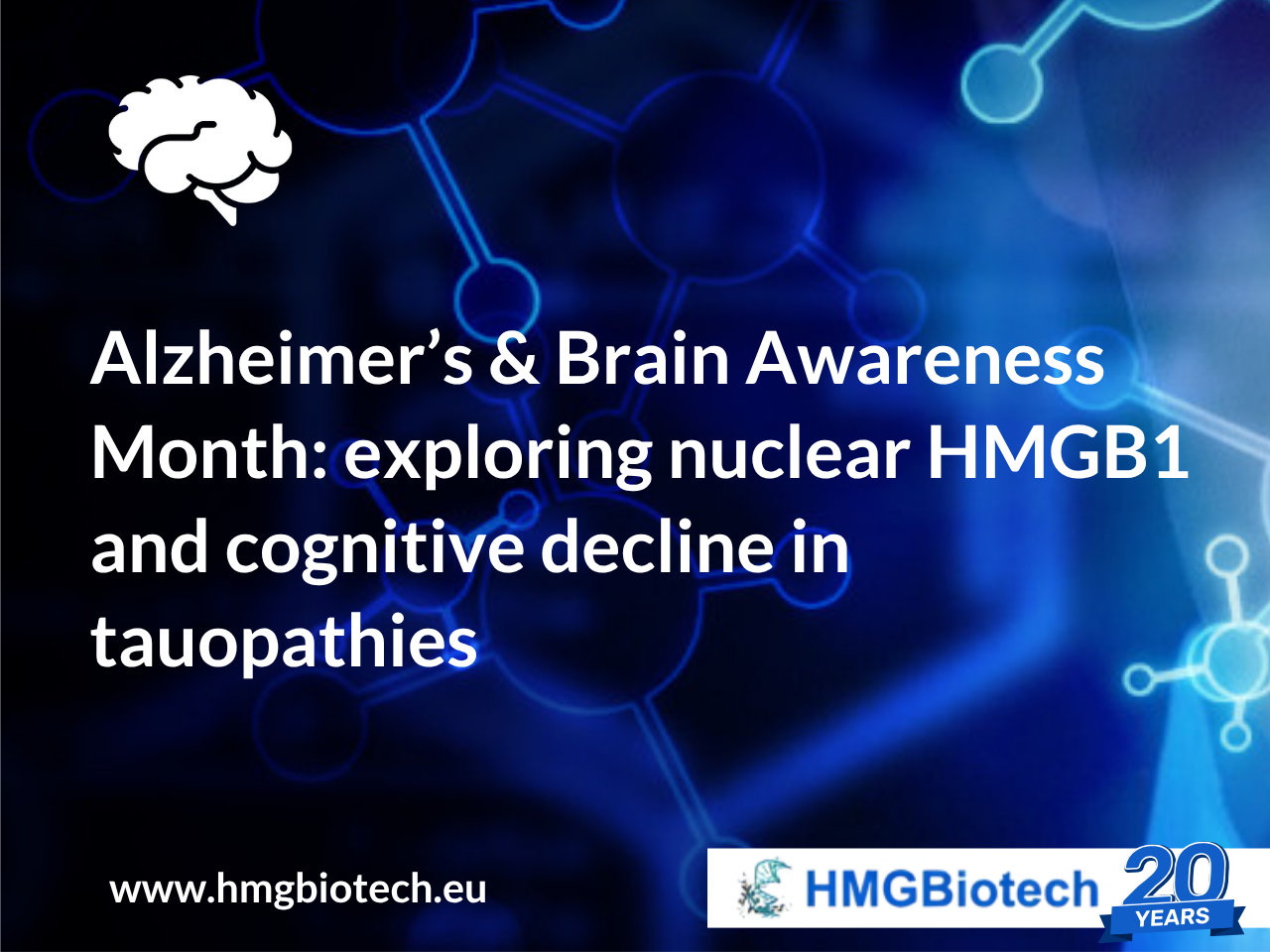June marks Alzheimer’s & Brain Awareness Month, an important opportunity to advance dialogue on the molecular underpinnings of neurodegeneration. Recent findings highlight a structural role of nuclear HMGB1 in safeguarding the brain from aberrant inflammation, DNA damage, and cognitive decline—especially relevant to tauopathies like Alzheimer’s disease.
In tauopathies, aging neurons often exhibit reduced nuclear HMGB1, a chromatin-binding protein crucial for genomic stability. This decline unleashes a cascade:
- DNA Damage & Cytosolic DNA release: HMGB1 depletion weakens nuclear integrity, resulting in DNA fragments leaking into the cytoplasm.
- cGAS–STING activation: Cytosolic DNA activates the innate immune sensor cGAS, triggering the STING pathway—a well-known driver of type I interferon responses and chronic neuroinflammation.
- Neuroinflammatory amplification: This self-sustaining inflammatory loop accelerates neuronal senescence, tau pathology (including hyperphosphorylated tau and neurofibrillary tangle formation), and ultimately promotes synaptic loss and cognitive decline
Implications for Alzheimer’s disease research
Recent studies using brain tissues from patients with tauopathies and corresponding mouse models have demonstrated that, when HMGB1 is experimentally knocked down, there is an evident exacerbation of DNA damage accompanied by the activation of the cGAS–STING signaling pathway.
This molecular cascade amplifies neuroinflammation and leads to more severe memory deficits, as confirmed by behavioral tests such as the Y-maze and the novel object recognition assay.
Such findings underscore the therapeutic potential of preserving nuclear HMGB1 or modulating cGAS–STING activity to counteract age-related neuroinflammation and cognitive deterioration in Alzheimer’s and related tauopathies. This aligns with a broader vision of targeting innate immune pathways to mitigate chronic brain inflammation.
At HMGBiotech, we are dedicated to supporting cutting-edge research on HMGB1 and its role in neurodegenerative diseases.
Contact us for your pre-sales questions about HMGB1
Read the full article about the study: https://pmc.ncbi.nlm.nih.gov/articles/PMC11709753/



